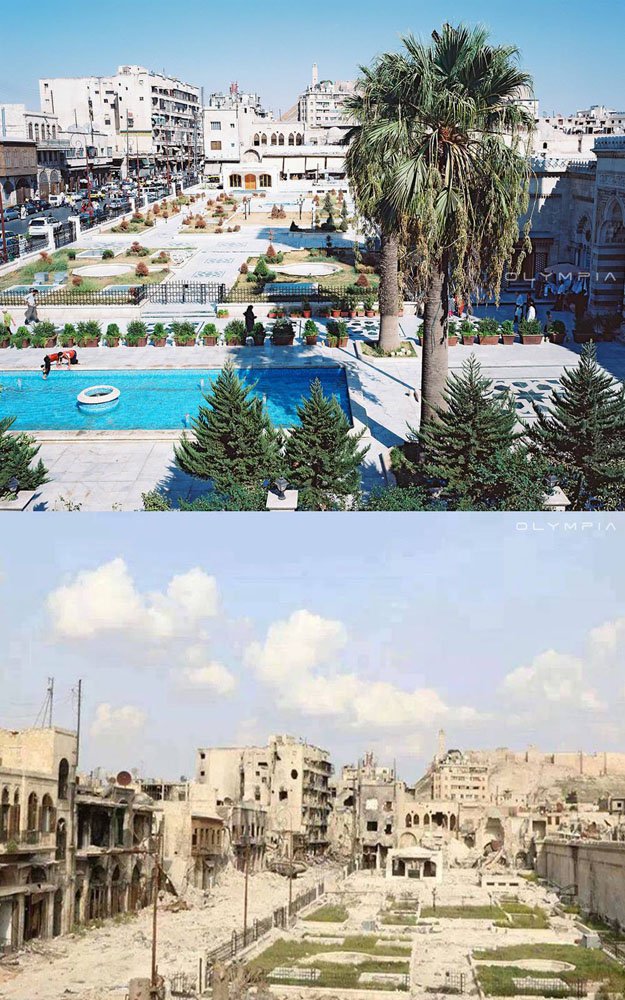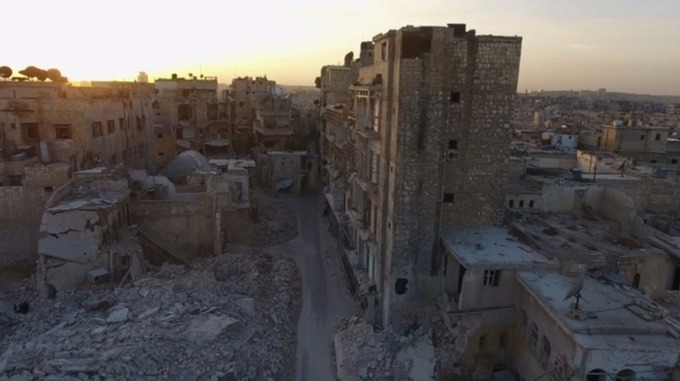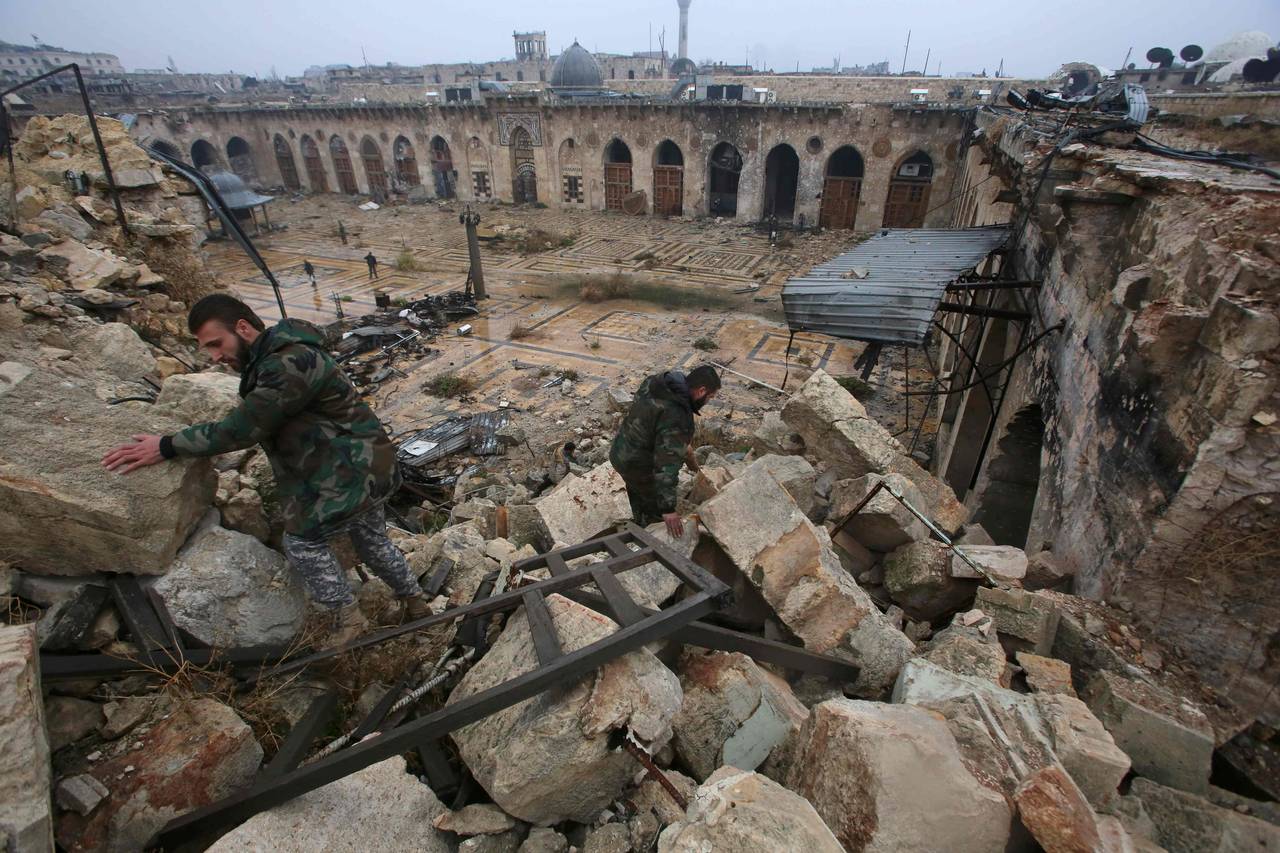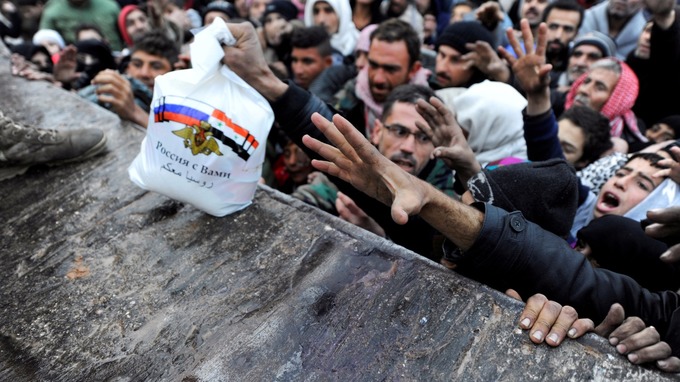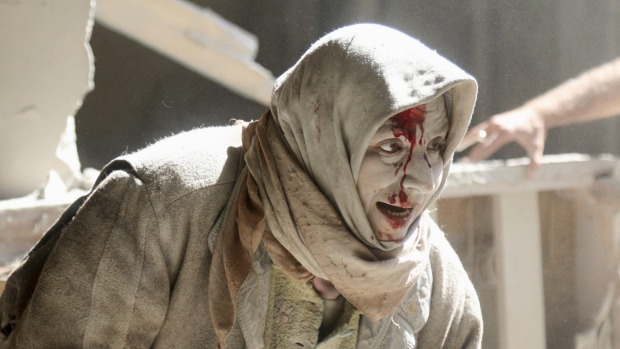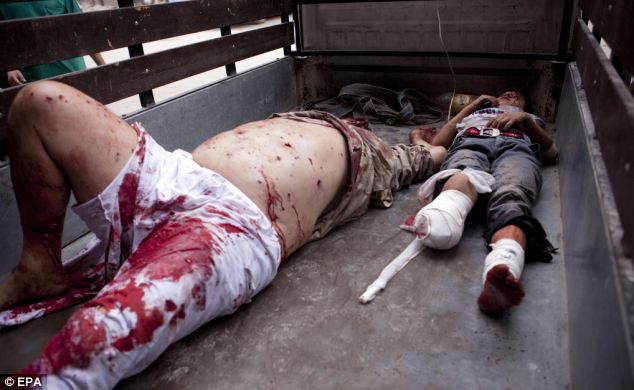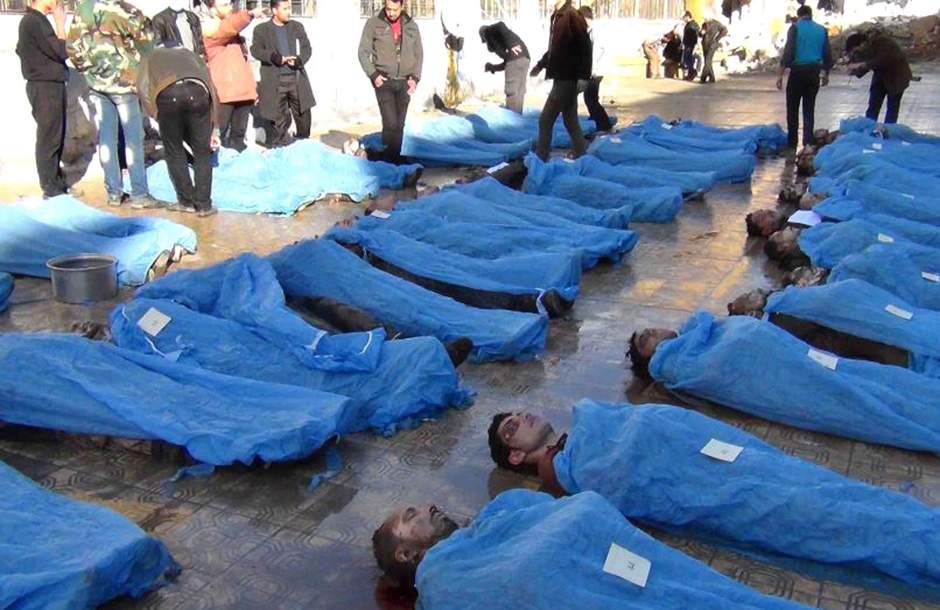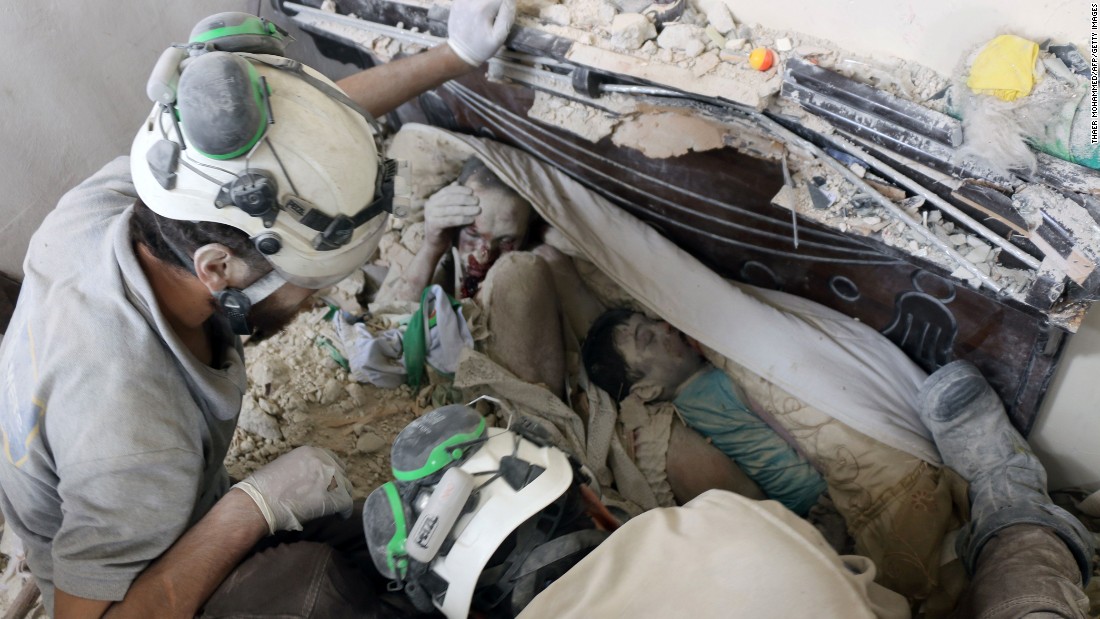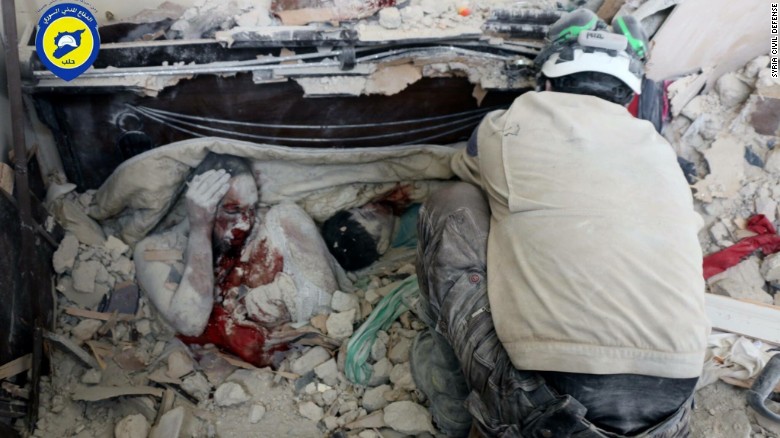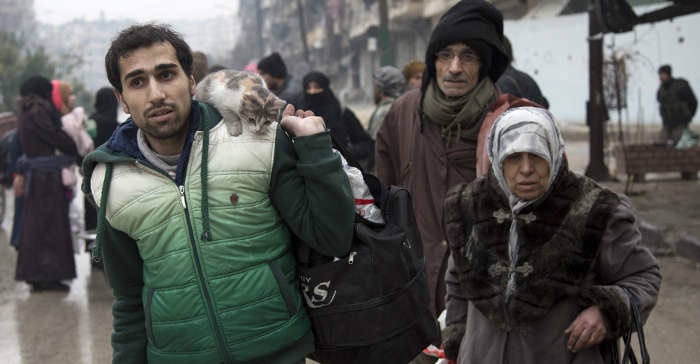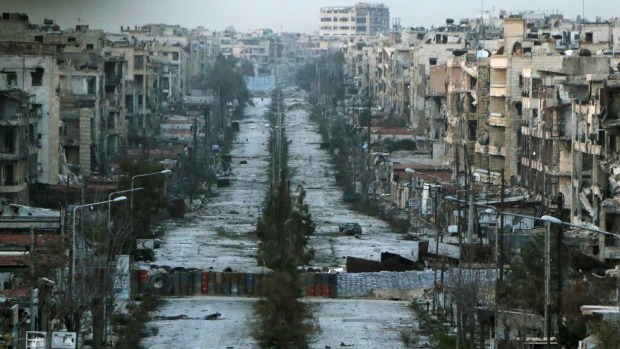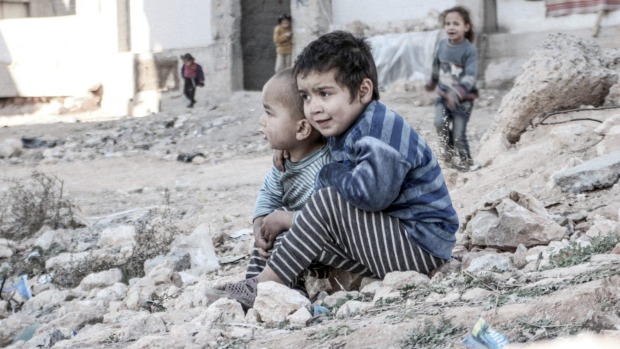Confused About The Battle Of Aleppo? Here Are 5 Important Facts You Must Know
The 101 on one of the most devastating wars of the 21st century.
In just five years, the once beautiful, cultural paradise that was Syria has been turned into scores of dead bodies, political chaos, and home to one of the deadliest civil wars of the century.
To date, the Syrian civil war has killed about 450,000 people, injured more than a million and the number of displaced Syrians are growing steadily.
When and how did the Syrian war begin?
In 2011, a series of anti-government protests known as the "Arab Spring" spread across the Middle East. The demonstrations, protests and armed rebellions eventually toppled Tunisian President Zine El Abidine Ben Ali and Egyptian President Hosni Mubarak.
As the protest grew and spread throughout the Middle Eastern continent, hundreds of Syrians took to the streets too, to express their discontent with their government. It all started on 15 March 2011, when a large number of Syrian protesters marched in Damascus, demanding for democratic reforms and and the release of political prisoners. The nightmarish conflict was further sparked when 15 boys were detained and tortured for writing graffiti in support of the Arab Spring. The youngest in the group, a 13-year-old boy, Hamza al-Khateeb, was brutally tortured to death for the "offence".
The protests continued for a few weeks, until 7 April, with more and more Syrians joining the protest against the government, asking for abolition of emergency laws, corruption and and rights to practice democracy and exercise their rights. With the government reacting very strongly against these protests, in just a month, the protesters started shifting their demands to removing the Assad government.
The protests and rebellions did not sit well with the Syrian government. Led by President Bashar al-Assad, the government decided to counter it by violently repressing the protests with a series of arrests and killings.
In less than a year, protests that started as a fight for democratic reforms and freedom was quickly turned into a civil war, especially after defectors from the military announced that they will be forming the Free Syrian Army, which is a group that wants to overthrow the government.
Why did the people start protesting against Assad's government?
For most parts, the people were fueled by the uprisings in Tunisia and Egypt that managed to dethrone the leaders there. Lack of freedoms, economic troubles, and harsh crackdown on dissents just made matters worse.
Islamist movements in the country were also strongly opposed to Assad's government. Bashar al-Assad is an Alawite Muslim. Alawi is a branch of Islam that falls under the Shia school of thought which believes that Prophet Muhammad designated Ali ibn Abi Talib as his successor. This is in contrast with Sunni Islam which hold the opinion that Muhammad did not appoint a successor. So, they consider Abu Bakr to be the Caliph.
While minority religious groups tend to show their support to the Assad government which is mainly dominated by members of the Alawite sect, it is a known fact that a majority of Syrians are Sunni Muslims.
Moving beyond religious and political beliefs, many have said that climate change too may have sparked the 2011 uprising. Syria faced a severe drought from 2007 to 2010, which led to more than 1.5 million people pouring into the cities from villages. The move aggravated poverty and social unrest in major Syrian cities.
Stuck in the midst of this bloody war, is Aleppo, one of the world's oldest and most beautiful city, that has become the worst-hit place in the country since the Battle of Aleppo started in 2012.
Dubbed as Syria's Stalingrad, the Battle of Aleppo is a military confrontation between the Syrian opposition against the Syrian Armed Forces.
Before the Syrian war descended on it and destroyed it, Aleppo was Syria's industrial and financial hub and home to more than two million people. Its well-preserved ancient beauty led to it being recognised as an 'Old City' under the Unesco World Heritage site.
Militants, rebels, pro-government forces and external forces have murdered more than 300,000 people, leaving nothing but images of ruin and devastation when you look up details of the city online.
The massive influx of information on the Battle of Aleppo may have left you a little confused about the horrifying war, but it is one that's worth knowing about as human lives are being destroyed and rights are being breached as we speak.
Here are five main things you need to know about the Battle of Aleppo:
1. When did the battle start?
In July 2012, Syrian rebels stormed into Aleppo and attacked the locals, eventually gaining power of the east side of the city which mainly consists of poorer districts while the western districts were strongly held by Assad's government forces.
The following year was a bloody mess as protesters were shot and rebels started to fight for the city. Hundreds of civilians were killed and injured as sarin gas was dropped on them. The violent attacks from both parties led to mass destruction of the city's infrastructure and ancient history.
2. Who's fighting the war?
On the home-ground, the Syrian opposition team includes the Free Syrian Army (FSA) Levant Front, Army of Conquest, Jabhat Fateh al-Sham (al-Qaida's former Syrian branch). As for the Assad supporters, the Syrian Armed Forces, Al-Quds Brigade, and Basij mainly make up the team of fighters.
It was reported that FSA, which is mainly made of defected Syrian army officers, had received funding and arms from the U.S., France, Turkey, and Saudi Arabia. Initially, FSA was seen as a more moderate group compared to other fighters in the war but reports have also surfaced on how Sunni jihadists, including the al-Nusra which has roots in al-Qaeda have sort of taken over the FSA as the war went on.
Foreign intervention came in the form of Russia, Iran, and Shia fighters from Afghanistan and Iraq and Lebanese Hezbollah fighters who are backing up Assad's Shiite government while the opposition forces are supported by mostly Sunni rivals from Saudi Arabia, U.S., and Turkey who want to see the end of Assad's reign.
Russia's intervention led to airstrikes by the Putin government which started in October 2015. According to a report by the Associated Press, four Syrian organisations have claimed that Russia is responsible for about 304 attacks in Aleppo alone that has served as a major violation of humanitarian laws and resemble war crimes.
AP sighted a letter by the organisations to the UN Independent International Commission of Inquiry on Syria recently. The organisations say that the attacks have resulted in 1,207 civilian deaths, 380 of it are children.
The four groups are the Syrian Civil Defence search-and-rescue group (White Helmets), the Syrian Network for Human Rights, Independent Doctors Organisation, and Violations Documentation Center.
Why is Russia so involved in this war?
The Russian government claims that its intervention and support for the Assad government comes from its intention to prevent Islamic extremists that have spread throughout Aleppo and Syria, in general.
3. What are the impacts of Russia's intervention in the Battle of Aleppo?
Pro-government forces walking around in Aleppo.
Image via YOUSSEF KARWASHAN/AGENCE FRANCE-PRESSE/GETTY IMAGESNew Zealand's Stuff said that leaflets were apparently dropped on eastern areas of Aleppo (mainly controlled by anti-government groups) which read, "This is your last hope. Save yourselves. If you do not leave these areas urgently, you will be annihilated. You know that everyone has given up on you. They left you alone to face your doom and nobody will give you any help."
Putin's strong support for the pro-government forces in Aleppo has not only murdered hundreds of people but has also strengthened Assad's government, helping them to besiege the rebels in the eastern part of Aleppo.
Meanwhile, the international powers have accused Russia of war crimes as most of the areas destroyed by the air strikes are civilian heavy areas, including places with hospitals and schools.
The air strikes left hundreds of civilians trapped, all the hospitals destroyed, and cut off food and medical supplies.
4. How many people have died from the bloody Battle of Aleppo?
The U.N. estimates that about 400,000 people have died and 80,000 people remain trapped since the battle started four years ago in Aleppo which once had a population of about two million.
According to the Syrian Network for Human Rights, since mid-November 2016, the war in Aleppo has taken the lives of more than 400 civilians, including 62 children. Hundreds of people have also fled the city and gone missing throughout the war.
Brahim Sawas and his 10-year-old son, Mahmoud died during the airstrikes in eastern Aleppo.
Image via CNN5. What is the current situation in Aleppo?
Syrian children watch as buses evacuate buses and civilians from eastern Aleppo.
Image via George Ourfalian/AFP/Getty ImagesAfter hundreds of thousands of lives were lost in the flurry of the war, Russia finally declared on Tuesday, 13 December that the battle over Aleppo is over as the rebel fighters agreed to ceasefire and turn over their remaining territory in Aleppo back to the Syrian government.
"Over the last hour we have received information that the military activities in east Aleppo have stopped, it has stopped. The Syrian government has established control over east Aleppo," said Russian U.N. Ambassador Vitaly Churkin during a U.N. Security Council meeting, as reported by Reuters on Tuesday evening.
As per the deal, evacuation was set to begin at 5am on Wednesday, 14 December. The deal was negotiated by Turkey and Russia.
This event is seen as a major turning point in the Syrian war which has been going on for almost six years as it would put the major cities in the country's western part back under the Syrian government's control.
While the Syrian government is enjoying its victory in Aleppo, hundreds of refugees were seen wandering the streets, homeless and bodies are piling up in certain parts of the town. People are either leaving the destroyed city of Aleppo or returning back to their shattered homes.
"There are many corpses in Fardous and Bustan al-Qasr with no one to bury them. Last night people slept in the streets and in buildings where every flat has several families crowded in," said Abu Malek al-Shamali, a resident in the rebel area, as reported by Reuters on Tuesday.
Four-year-old Esraa is sitting with her three-year-old brother Waleed on the ground, among the rocks and rubble.
Image via Unicef NZ